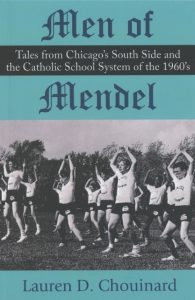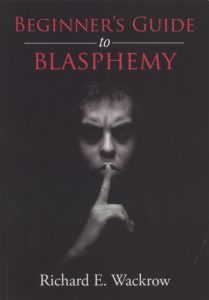Illinois State is proud to be able to acknowledge the work of graduates who are successful authors.
If you’ve written a book that has been released by a publishing house within the past decade, submit it for review by Professor Emerita of English JoAnna Stephens Mink ’73, M.S. ’75, D.A. ’85.
All books authored by alums will be added to a collection of work by other graduates on display in the Alumni Center. Autographed copies are especially appreciated.
Please send your book to Illinois State editor Susan Blystone at Illinois State Alumni Center, 1101 N. Main Street, Normal, IL 61790. Inquiries can be sent to sjblyst@IllinoisState.edu.
 Darlene’s Silver Streak and The Bradford Model T Girls
Darlene’s Silver Streak and The Bradford Model T Girls
John G. Butte. 2015. 297pp.
Summary: Darlene’s Silver Streak and The Bradford Model T Girls is an account of road journeys undertaken by a group of single women in a 1926 Model T Touring car, which they named “Silver Streak.” Interesting as the car itself might be, the story is really about these adventurous young women. Darlene’s Silver Streak is not a memoir but a researched account and vignette of 1930s and 1940s America. Butte’s research took him to The Benson Ford Research Center in Dearborn, Michigan, where he found documented communication between the women and Henry Ford.
The “girls,” as Butte refers to them, had many interesting adventures. One was when they created “a sensation” simply by driving their Model T Touring car into Hollywood.
Eventually Darryl Zanuck’s secretary returned their phone call and invited them for lunch and a tour of 20th Century Fox Studios. Actors such as Don Ameche, Lloyd Nelson, and “Bojangles” Robinson added their autographs to the Silver Streak’s exterior and had their photos taken with the girls.
On subsequent days, they toured Republic Studios, Paramount Studios, and MGM. They saw the sets of Dorothy Lamour’s picture Moon Over Burma. On another trip, Henry Ford’s office apparently was expecting them when they arrived in Norfolk, Virginia, and “poured out the famous Ford hospitality that Darlene had become accustomed to previously in Detroit, New York City, and San Francisco.” (186)
The Bradford Model T Girls, later known as the Gypsy Coeds, took their last trip in 1942. One of the 20 Gypsy Coeds was Butte’s mother, Regina Fennell. Another was his aunt Eleanor. Their story has become Butte’s story. He owns the car, which still runs. It has been exhibited at three different museums within the past 12 months.
Darlene’s Silver Streak and The Bradford Model T Girls is Butte’s first book, which he self-published and released October 2015 in conjunction with the exhibition Gypsy Coeds Ride The Silver Streak at the Peoria Riverfront Museum. The many photographs, reproduced letters, and newspaper clippings support this fascinating narrative about a group of plucky women who are part of 20th-century American history.
About the Author: John G. Butte ’71, MBA ’76, began researching and writing this book shortly after retiring in 2013. He and his wife live in Dunlap.
 Men of Mendel: Tales from Chicago’s South Side and the Catholic School System of the 1960s
Men of Mendel: Tales from Chicago’s South Side and the Catholic School System of the 1960s
Lauren D. Chouinard. Indianapolis: Dog Ear Publishing, 2016. 126pp.
Summary: The first Catholic school in Chicago, which was a boys’ school at Madison Street and Wabash Avenue, opened in June 1844. By 1871—the year of the Great Fire—all of the city’s 24 parishes supported Catholic schools. Usually run by nuns, these schools met the needs of the diverse immigrants who settled in Chicago, according to Lauren Chouinard in his short history chapter.
Men of Mendel focuses on the high school for boys that opened in September 1951 to handle the post-war baby boom on Chicago’s South Side. The building was the refurbished Pullman Tech school, in the Pullman neighborhood. The school was named for Augustinian Monk Gregor Johann Mendel, father of genetics. Chouinard’s oldest brother was in Mendel’s first graduating class in 1955.
The book is an engaging account of Chouinard’s high school years, which may interest anyone who knows him. However, its range is much wider. Chouinard moves from a description of travelling to Mendel and the cost of bus tickets, to a broader analysis of how discipline in Catholic schools “at the hands of black-robed agents of God” has evolved, to an analysis of the violence after Martin Luther King Jr.’s assassination in April 1968.
More than a memoir, Chouinard’s chapters provide a historical and social synopsis of American Catholic education. “The Augustinians,” for example, includes description of the church hierarchy and explanation of the importance of the required two years of Latin. The reader can reminisce about his/her own high school years or learn about this slice of 1960s American life and society. Thus, Men of Mendel is useful to non-Catholic readers and to those with no connection to Chicago’s South Side.
About the Author: Lauren D. Chouinard ’74 attended Illinois State before moving to Eugene, Oregon, where he and his wife continue to live. After several years in the health club business, the remainder of his career until retirement in 2008 was in human resources for the city of Eugene. His previous two books are Get Off Your Butt! A Practical Guide to Enjoyable Fitness and Muscle and Mayhem: The Saginaw Kid and the Fistic World of the 1890s.
 No Matter What
No Matter What
Monica Soulsby. Mustang, Oklahoma: Tate Publishing, 2016. 338pp.
Summary: A package arrives in 1602 for Annabelle Therese Montoya DeVeracio containing a diary from her Aunt Harriet. More familiarly known as Anna, she lives in Merripit Castle in Sicily, Italy. Anna’s description of her sleeping quarters opens Monica Soulsby’s first novel, No Matter What. Subsequent short diary entries reveal Anna’s situation—and her fear that Father will “brainwash me into being the most proper, quiet young princess possible.”
We learn that Anna was adopted as an infant by the Italian royal family and that Father is the king. Annabelle, who is a Cherokee Indian, goes on a journey to find her family. She encounters many obstacles, including kidnapping and conspiracy.
One of her traumas occurred within the castle walls. As she strolled in the stable area, she heard a voice and a laugh immediately prior to an arrow, shot from the forest and wounding her in the arm. It was apparently shot by someone she knew: “I only just saw out of the corner of my eye the unmistakable bald head and long beard of the earl, smiling, emerge from the forest and look right at me.” (40)
A few weeks later, Anna foils an attempted poisoning. After seeing the earl put poison in the ratatouille, in “my princess slippers” she sits next to the king but seemingly accidentally knocks the dish onto the floor. Other adventures and attempts ensue in Anna’s hazardous life.
No Matter What is published by Tate Publishing, a hybrid of self-publishing and a more traditional publishing model, according to the review on bookpublisherscompared.com. The novel is a strong foundation for Soulsby’s future career as a creative writer.
About the Author: Monica Soulsby is an Illinois State junior majoring in English education. She is from Grand Ridge. She follows a strong Redbird tradition with mother, cousins, and other family members having graduated from the University.
 Beginner’s Guide to Blasphemy
Beginner’s Guide to Blasphemy
Richard E. Wackrow. Empiricist Press LLC/Lulu Press: 2016. 146pp.
Summary: Discussions about religion are “taboo” in American society, opines Richard Wackrow in his preface to Beginner’s Guide to Blasphemy because “they offend the delicate sensibilities of the believers.” Theologians refer to vague books and filter their interpretations through their own personal viewpoints. His purpose in writing this book is “to take off the kid gloves and talk about religion—and to acknowledge it as the steam heap of malarkey that it is.”
Wackrow discusses the many fallacies that religion has offered. “I wrote this book to encourage nonbelievers to be more assertive in their lack of faith, and to give them the intellectual ammunition to do so.” The 10 chapters examine his thesis. In “COEXIST? They Must Be Kidding!” Wackrow attacks the “simple-minded” COEXIST bumper stickers that convey a specious argument that people can be tolerant of religions other than their own. The bumper sticker is blasphemous because it contradicts the idea that religious dogmas have always been mutually exclusive.
The following chapters try to provide “a thoroughly unbiased assessment of the fundamental evils of religion,” says Wackrow (127). The main text focuses on “Faith Forsaken,” “Myths About Atheists,” “The Truth About Believers,” “The 15 Commandments,” “Is He or Isn’t he?, “Will the Real Jesus Please Rise Up?,” “Religion in Action, Be Careful What You Pray For,” and finally, Islamophobia-phobia. His conclusion “So Why Blasphemy?” analyzes the tension between Christians (even those who are non-homophobic, non-misogynistic, etc.) and the “spectacle of Islamic terrorism,” which has “Christianists thinking they are under assault.” (127)
Ultimately, explains Wackrow, prayer doesn’t work, there is no afterlife or heaven or hell, people of different faiths will never coexist, and the Ten Commandments are inadequate as a moral guide. Finally, religious people are not entitled to special treatment but should be treated in accord to what they profess and how they behave.
About the Author: Richard E. Wackrow ’71 was a reporter, feature writer, editor, and columnist in several newspapers and magazines. His Who’s Winning the War on Terror (2012) was reviewed by Reggie Reads in 2012. Since then, Wackrow has written magazine articles and given presentations about the war on terror to groups in California and Oregon. He is president of the Flathead Area Secular Humanist Association in Montana. He resides in Polebridge, Montana.

